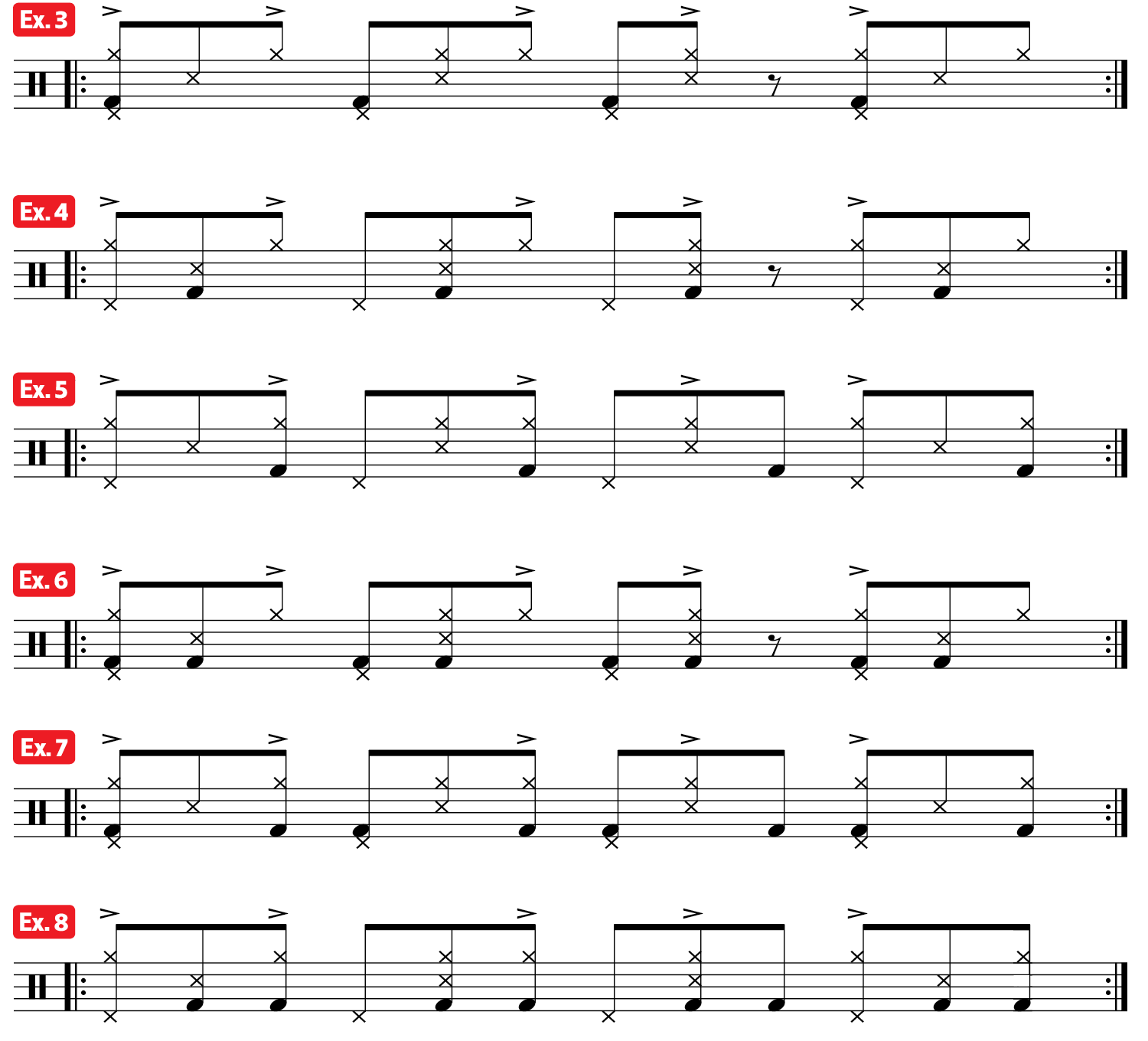BY BRIAN ANDRES | FROM DRUM! MAGAZINE’S MAY 2018 ISSUE
All great jazz drummers have the ability to play time fluidly on the ride cymbal while comping on both the snare drum and bass drum. The concept of syncopated communication between these two drums, while maintaining a swing pattern on the ride cymbal, was developed by bebop drummers in the 1940s. This technique continues to be one of the essential elements of jazz drumming today. Having the facility to play syncopated patterns between the snare and bass drum is also an important construct in Afro-Cuban jazz drumming.
This lesson introduces a standard pattern in Cuban music called Bembe (Ex. 1), which also translates well to other forms of music. You can play this pattern on a cowbell, hi-hat, or ride cymbal.

The February 2018 Practice Pad column,“Afro-Cuban 12/8 Vocabulary,” also used this pattern while working on freeing up the snare drum. This article focuses on freeing up the bass drum and then integrating both snare and bass parts together.
Let’s start with Ex. 2, a three-limbed ostinato pattern. Play the Bembe ride cymbal pattern while the hi-hat (or cowbell if you have a foot pedal attachment) plays a dotted quarter-note pulse. Initially, play the snare drum as a cross-stick on the 2, 5, 8, and 11 of the 12/8 measure. If you prefer, you can also think of the cross-stick as the second note of every triplet. This lends an authentic Afro-Cuban feel.

In Ex. 3–8, move the bass drum part through the eighth-notes in groupings of one or two notes. Practice these exercises individually until you’ve gained a minimum of control and facility with each before moving to the next one. You can then begin to mix and match each exercise to create your own interesting practice routine.

If you have already gained some independence with the snare drum playing this 12/8 bell pattern from the previously mentioned February column, then it is time to begin combining the snare and bass drum into syncopated, improvisational patterns.To get started with this, I’ve created a four-bar pattern in Ex. 9.

Mastering this technique should free you up from simply playing a “Latin beat,” and help you achieve a more fluid and musical Afro-Cuban drum set facility.
BRIAN ANDRES performs with numerous Latin, Caribbean, and African ensembles in the San Francisco Bay Area and leads the critically acclaimed Latin jazz group The Afro-Cuban Jazz Cartel. He is a Bosphorus Cymbals artist and a Regional Artist Endorser for Sakae Drums. www.brianandres.com

